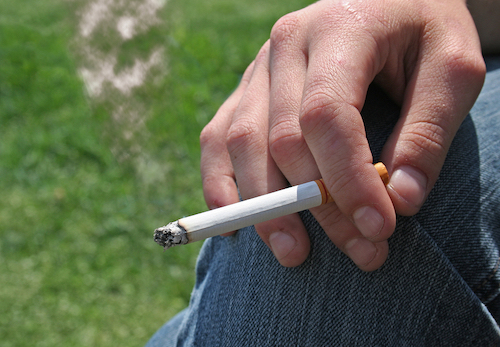 It’s the leading cause of death and preventable disease in the United States and is responsible for more than 480 thousand deaths every year.
It’s the leading cause of death and preventable disease in the United States and is responsible for more than 480 thousand deaths every year.
More than 34 million adults in the US currently smoke cigarettes, and more than 16 million live with a smoking related disease.
But after decades of anti-smoking campaigns, what drives this behaviour? Do emotions factor into it?
Researchers from Harvard University set out to find an answer.
A set of four studies detailed in a report published in Proceedings of the National Academy of Sciences found that sadness plays a significant role in acting as a trigger for addictive behaviour.
“Past work from our lab has demonstrated that sadness, but not all negative emotions, triggers financial impatience, spending on consumer goods, and unhealthy eating. Based on this past work, we predicted that the same may be true for addictive substance use and were actually not surprised that sadness appeared to be a particularly strong trigger for smoking. Indeed, it appears that sadness triggers a generalized desire to seek immediate rewards, whether that’s in the form of addictive substance use or consumer goods,” Charles Dorison, lead research and a Harvard Kennedy School doctoral candidate told Theravive.
Dorison says the accepted view in the field was that any form of negative feeling like stress, disgust, anger, sadness, fear or shame would make a person more likely to use an addictive substance. But Dorison says the studies suggest the reality is much more complex. They concluded that sadness was a notable trigger for addictive substance use but other negative emotions like disgust didn’t have the same effect.
Dorison notes this doesn’t mean other negative feelings don’t trigger use of addictive substances (the researchers think stress could be a similar trigger) but the trigger of sadness appeared particularly significant.
The four studies that were in the report included a data analysis of a national survey over 20 years of more than 10 thousand people.
“Results revealed that self-reported sadness among participants in the survey not only was associated with who was currently a smoker, but could also predict who would relapse up to 20 years later. At each individual point in time, the sadder an individual was, the more likely s/he was to be a smoker,” Dorison said.
Another study tested whether sadness actually caused people to smoke more. In undertaking this study, the researchers recruited smokers and split them in to three groups. Each group was shown a video clip that was either sad, disgusting or neutral. Those in the sad clip group were then asked to write about a loss in their own life, the group shown the disgusting clip was asked to write about an unsanitary experience they had been through and the neutral group was asked to write about their work. The participants were asked to report their craving for cigarettes both before and after the experiment using a standardized scale.
“We predicted and found that while individuals in the sadness condition – those that watched the sad video and wrote about loss – had higher craving than individuals in the neutral condition, even after controlling for level of craving coming into the study,” Dorison said.
The researchers hope that the findings of their work will help better inform policy makers producing public health campaigns.
Collectively, the Federal, state and local governments in the US spend at least 500 million dollars every year on anti-smoking campaigns. The US Centers for Disease Control and Prevention’s “Tips From Former Smokers” campaign helped 1.83 million people attempt to quit smoking and 104 thousand people to quite completely at a cost of 54 million dollars since 2012.
Dorison says the research could be used to make campaigns more effective.
“One key application of this work is to the design of anti-smoking public service announcements. Specifically, as we note in the paper, anti-smoking public service announcements could unintentionally increase cigarette cravings among smokers if they trigger sadness,” Dorison said.
“Given that government spending on anti-tobacco campaigns remains miniscule compared to the advertising and promotion budget of the tobacco industry (estimated to be around $10 billion per year, or 20 times the size of government spending), it is vital to understand how these campaigns can be most effective. We believe that theory-driven psychology research could help shed light on how to improve these campaigns,” Dorison said.
Elizabeth Pratt is a medical journalist and producer. Her work has appeared on Healthline, The Huffington Post, Fox News, The Australian Broadcasting Corporation, The Sydney Morning Herald, News.com.au, Escape, The Cusp and Skyscanner. You can read more of her articles here. Or learn more about Elizabeth and contact her via her LinkedIn and Twitter profiles.